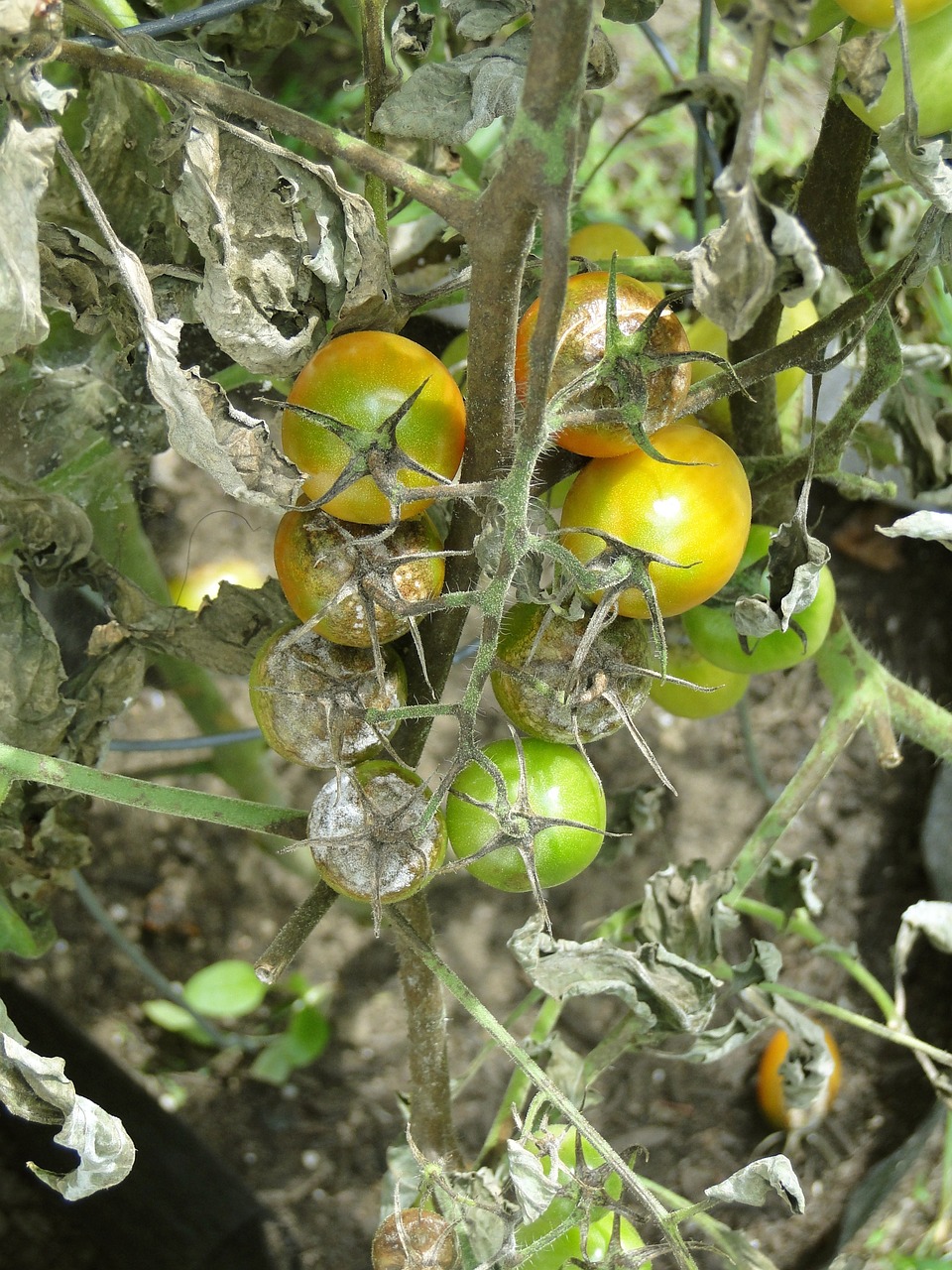Within the last month or two the east coast of Australia has seen unseasonably heavy rainfall and floods. Such weather is conducive to the development of a common disease on both tomatoes and potatoes known as ‘Late Blight’ caused by the fungal-like organism Phytophthora infestans. It has the ability to rapidly wipe out crops and to spread to other related crops. Late Blight is the disease which wiped out potato crops in Ireland between 1845 and 1852 causing the ‘great famine’.
What does the fungal disease Late Blight look like?
Symptoms
Lesions or spots start on the edges of leaves as irregularly shaped brownish-black water-soaked areas. The symptoms can also start on stems or leaf petioles. Whilst disease conducive weather persists (cool, moist conditions), the spots grow rapidly forming dark, purplish black lesions. These lesions spread very rapidly and can cause defoliation and death of a crop within 10 days. When humidity and leaf wetness is high, a white cottony growth will be visible on the undersides of lesions. It is this area that contains the spores known as sporangia.
On green fruit, greenish-grey water-soaked spots can be seen and these enlarge and coalesce to form large brown leathery looking spots. These can also develop a white fuzzy growth full of spores if conditions remain moist. On ripe fruit, concentric rings develop within the lesion which may also give rise to spore-bearing masses. As the skin of the tomato is now weakened, other soft rot bacteria can penetrate leading to a wet, soggy mass.
Symptoms on potato foliage are similar to those on tomatoes, but if the disease is still present at harvest, and there is rain around, tubers may be infected resulting in a brown rot that starts from the skin. Eventually, such infected tubers will rot from Late Blight as well as secondary Soft Rot bacteria.
Under dry conditions, Late Blight dries up very rapidly.
Disease Spread
Late Blight produces spore-structures called ‘sporangia’ in cool, wet or humid weather. These spores when released, can travel up to 20 kilometers in wind or wind-blown rain. Spores can also be spread via rain splash.
If a plant collapses from Late Blight, it can release spores which may drop into puddles or lie in droplets of water on plants. These spores develop slightly different from the normal ones in that they develop flagella – hair like structures that allow the spores to swim. These spores are called ‘zoospores’. They can move to another plant from where they landed, attach themselves, and cause another cycle of infection.
Both sporangia and zoospores do not have the ability to survive for long unless in the soil – where they can last for a few weeks. However the Late Blight disease can form spore-structures known as ‘oospores’ which are very resistant to adverse conditions and can survive for many years in the soil until favorable weather conditions return.
Hosts
Any plant that is related to tomatoes or potatoes can be a host to the Late Blight. These include members of the capsicum family, eggplants and also weed species such as Nightshade.
If infected potatoes have been left in the soil or discarded, they can also form sources of infection for future crops.
How Do You Control Late Blight?
Cultural Control
Disease control needs to be a combination of as many strategies as possible. Cultural control alone during a wet spell will not prevent Late Blight. Strategies that can reduce disease are:
- Source and plant certified disease-free seedlings or tubers.
- Destroying volunteer tomatoes or potatoes either through herbicides or by cultivation. Volunteers will grow from old tomatoes that have dropped onto the ground where the spores have germinated, or diseased potatoes that have been dumped, or even potatoes that have been left in the ground. Volunteers on compost heaps should also be destroyed or deep buried.
- Morning irrigation will allow the plant foliage to dry before nightfall, thus minimizing disease development at night.
- Ensure good air circulation within a crop – in the case of tomatoes, through staking and pruning and for tomatoes and potatoes, through spacing; this will lessen disease and allow leaves to dry quickly.
Chemical Control
Where plants are affected by Late Blight, contact your local garden store or distributor to find out what chemicals are registered for Late Blight control.
The Author:
Lucia Grimmer holds a Master’s Degree in Plant Pathology, is a plant nutrition technician and a world authority on plant disease and gardening. Every day she provides technical advice to professional horticultural growers all over the world.
Follow us on our blog for regular tips on growing veggies – http:/growingveggies.com
